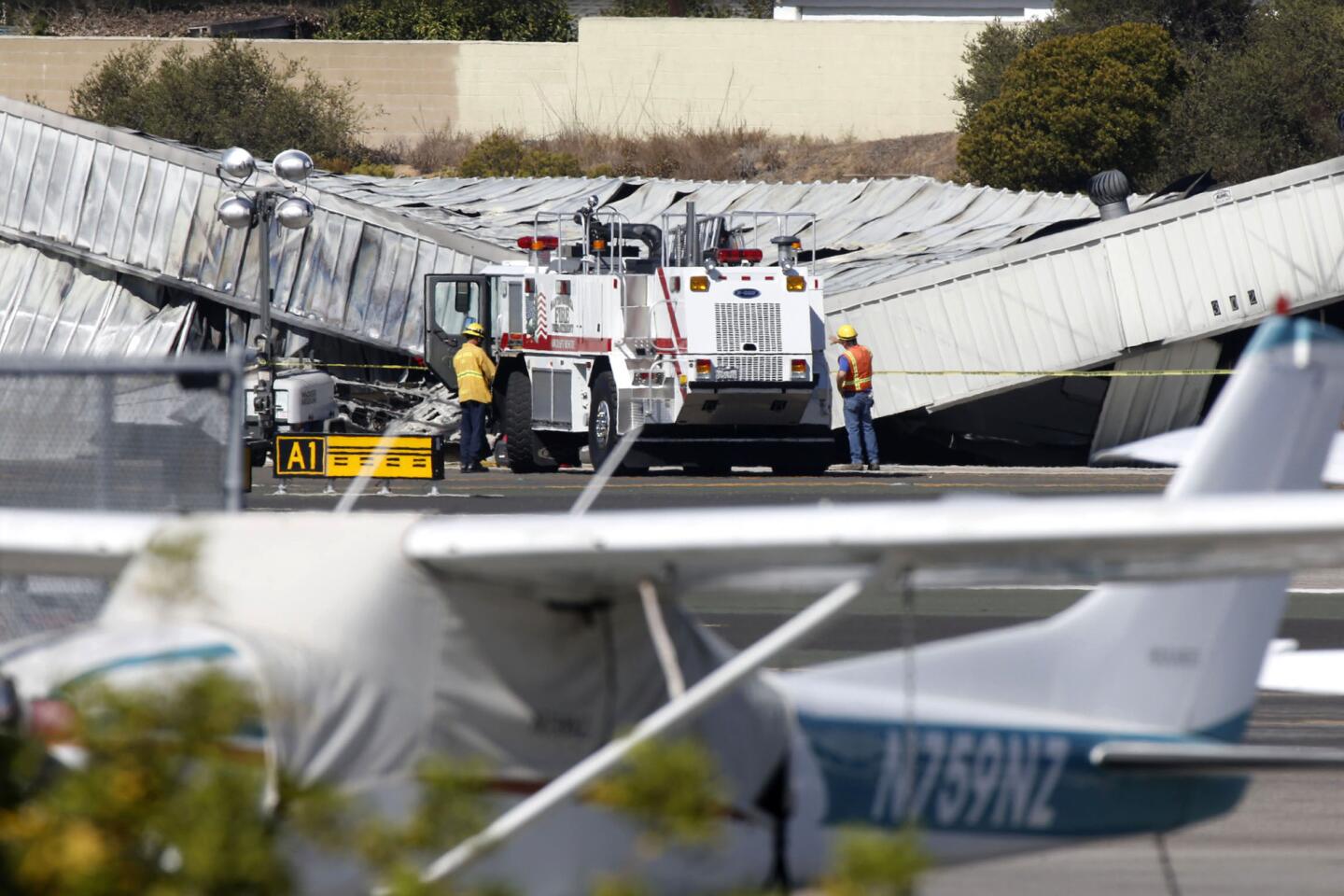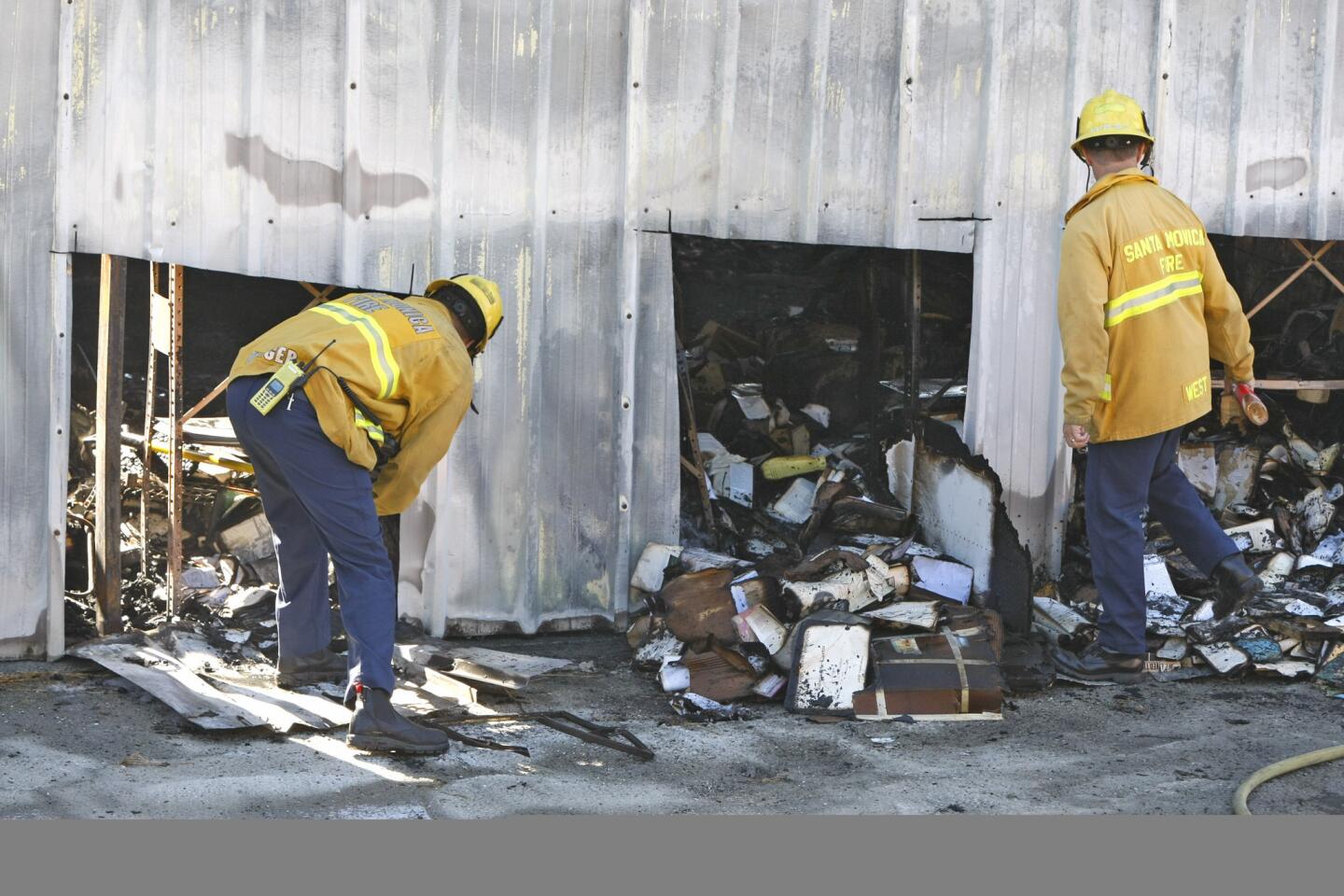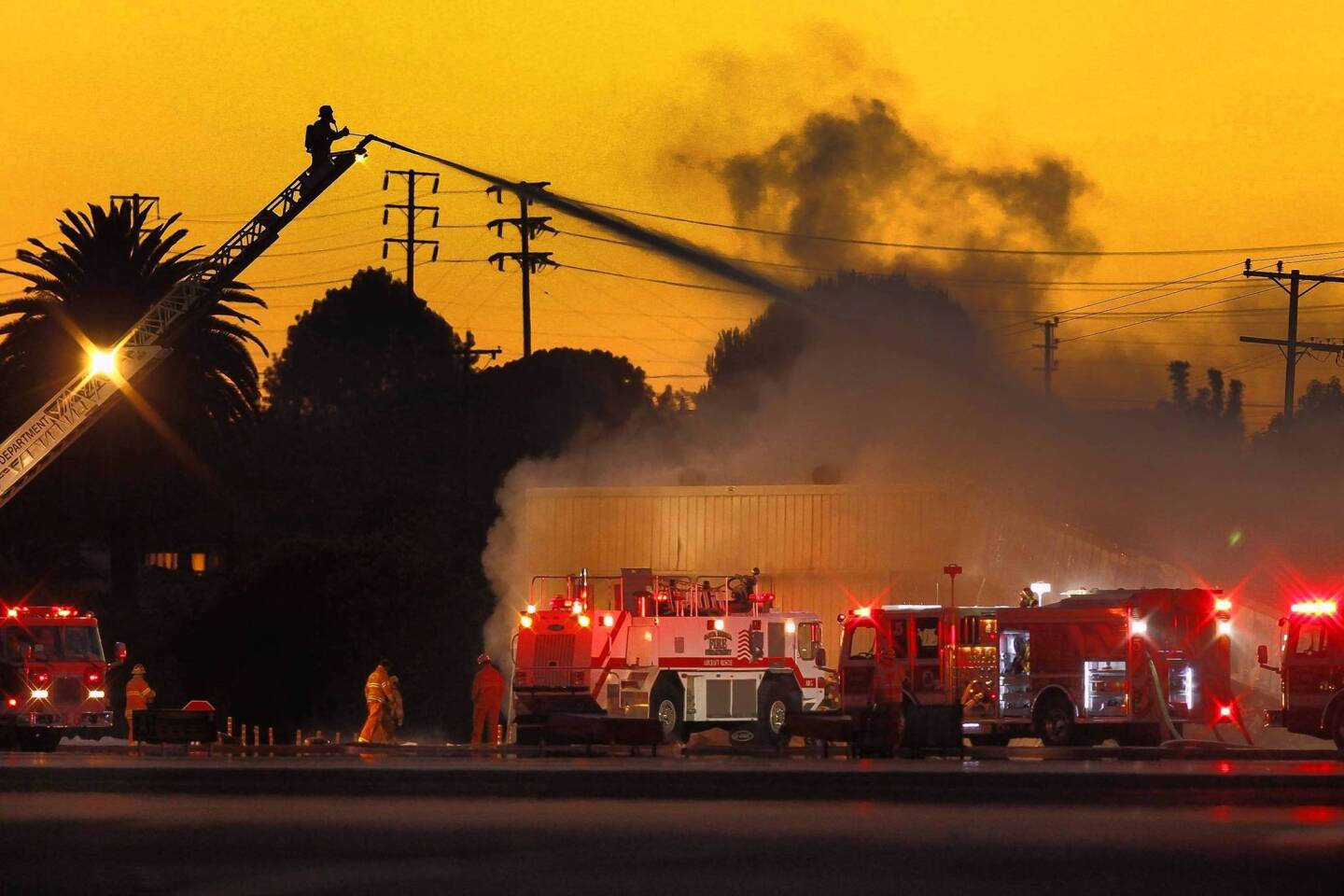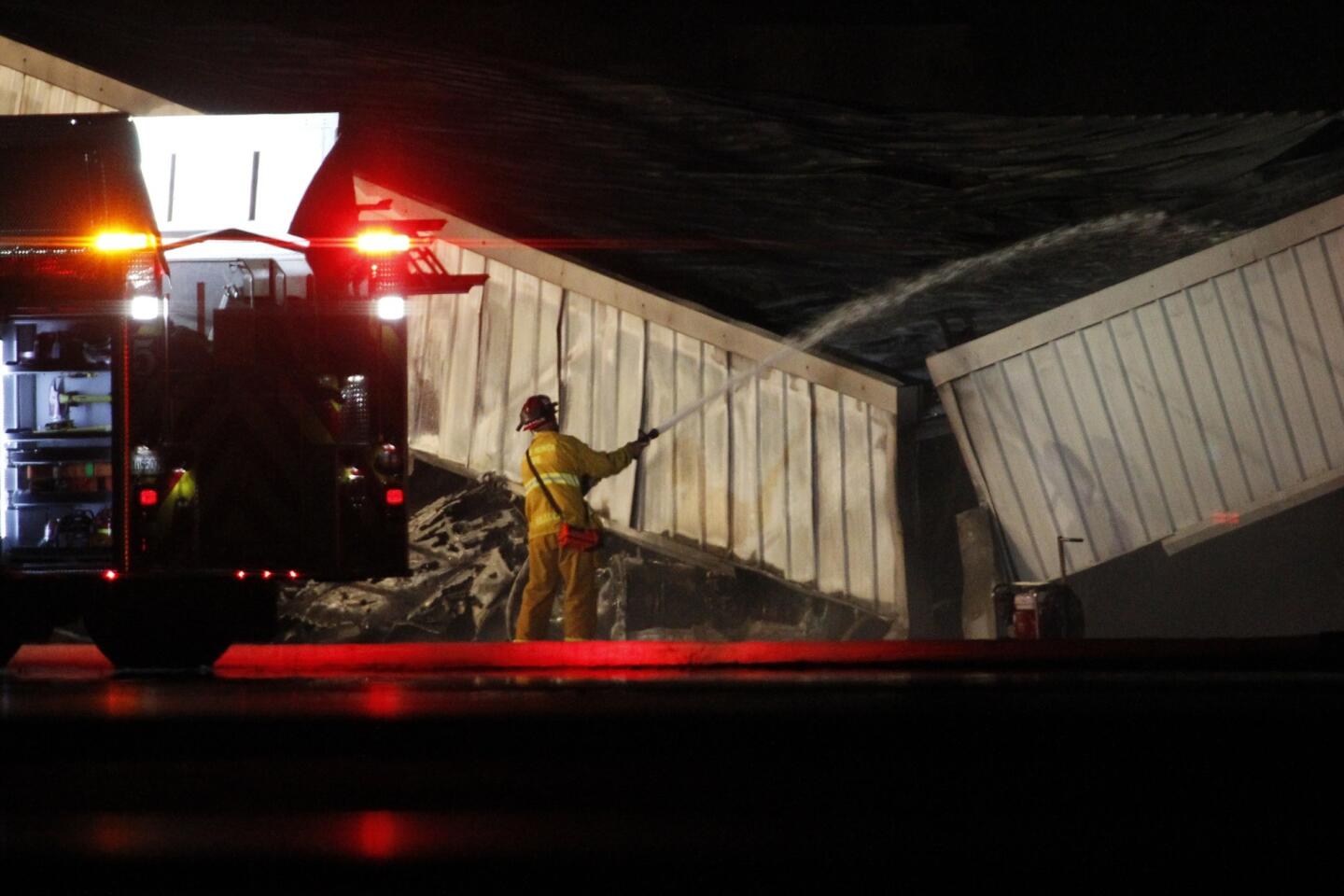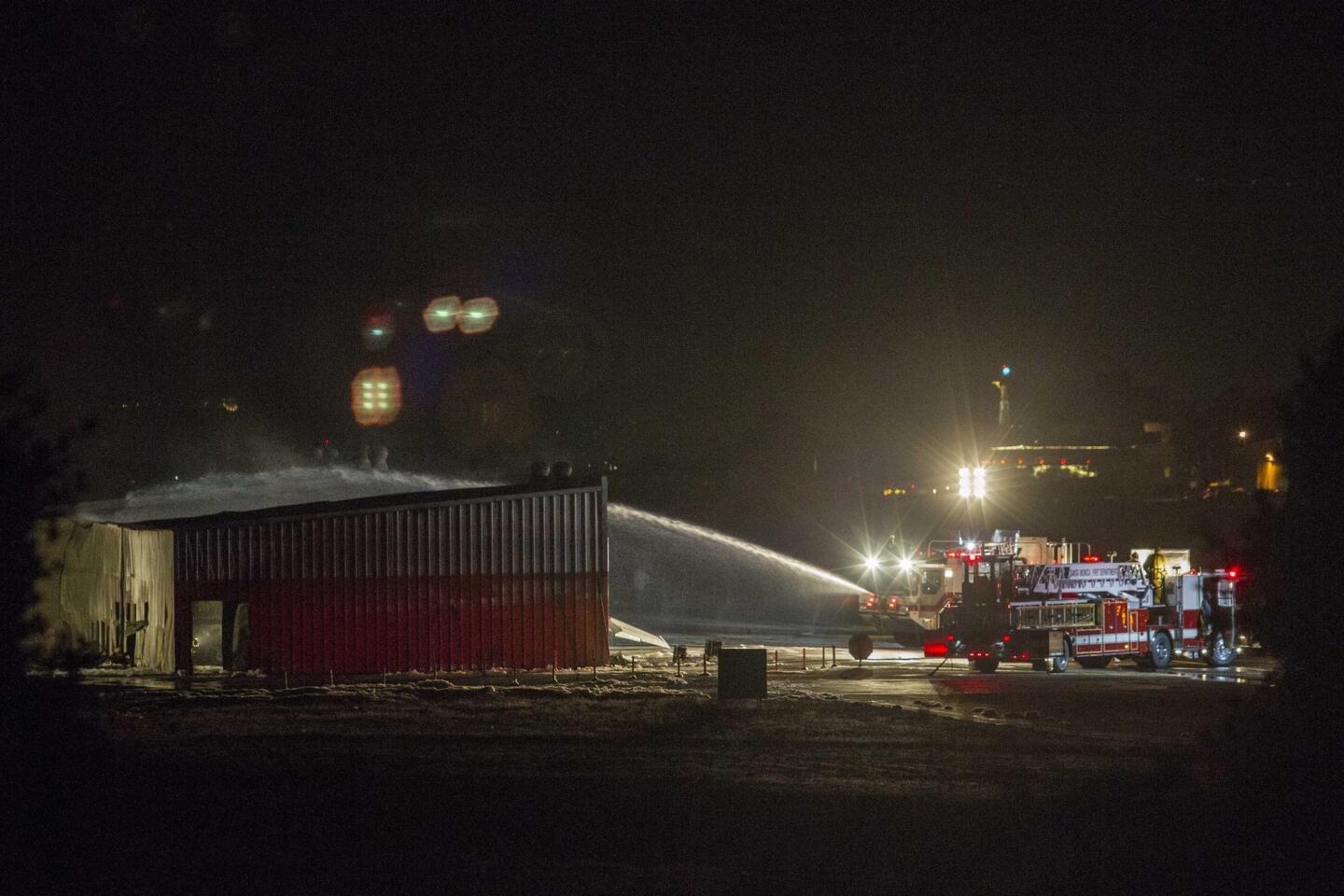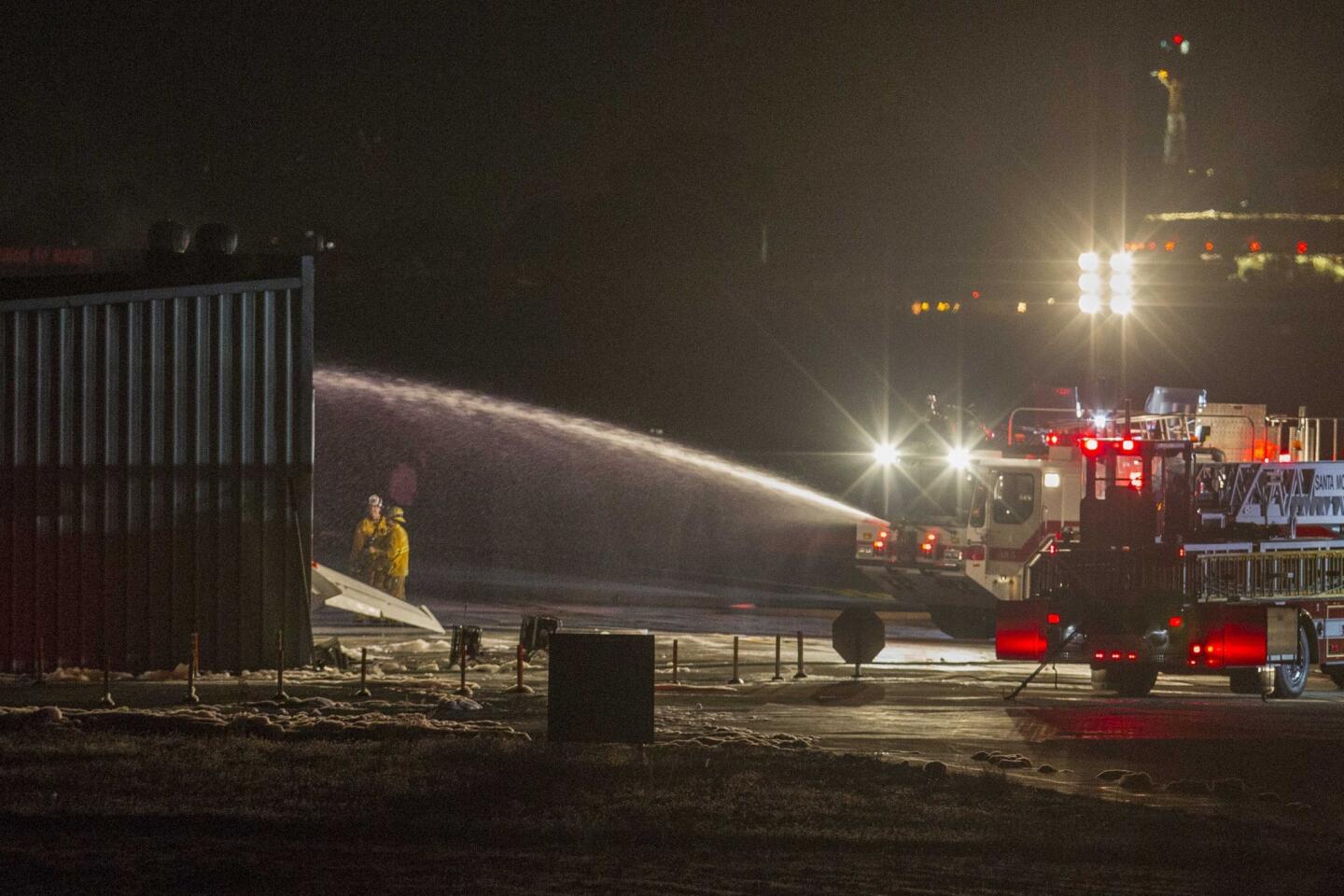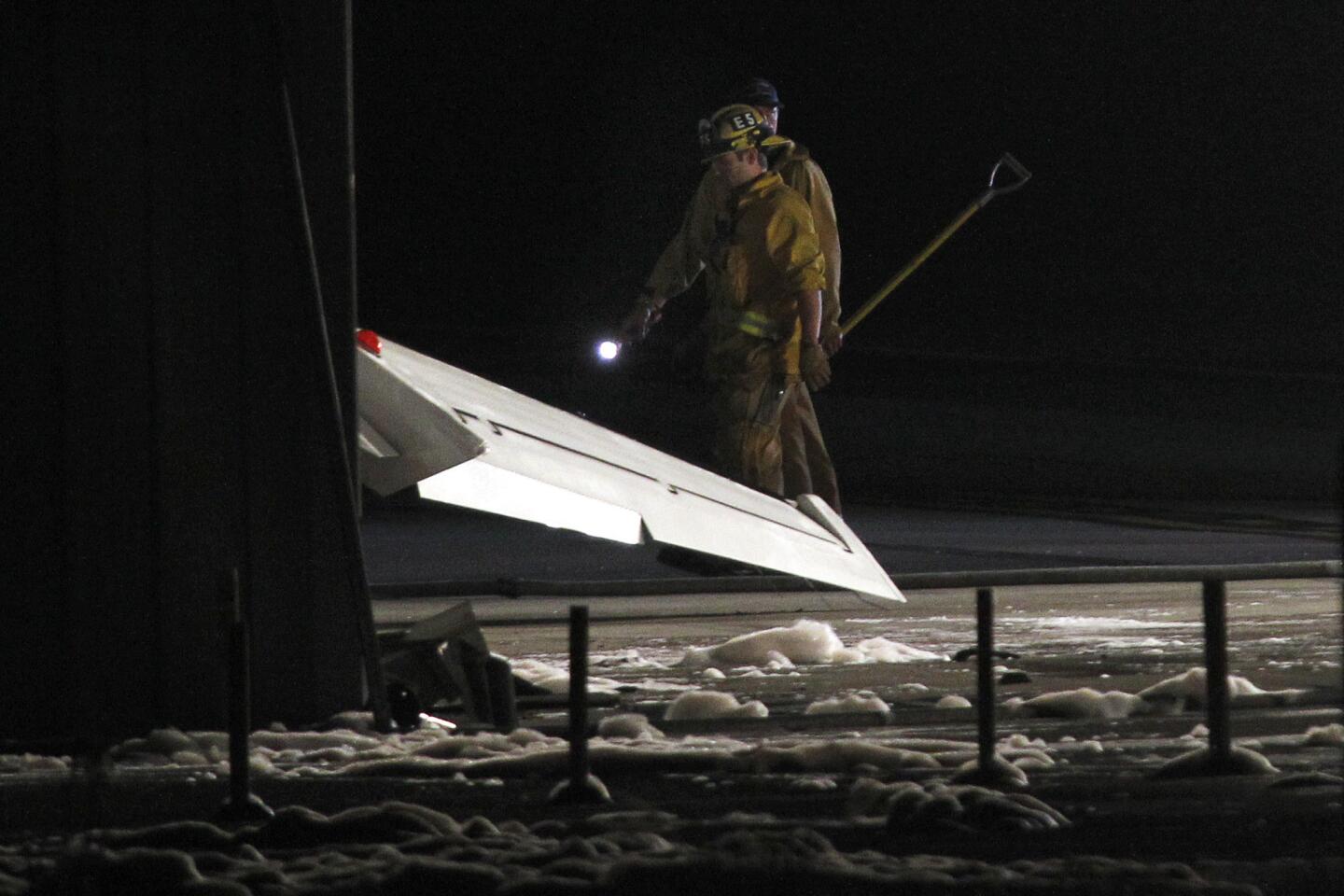Santa Monica Airport crash sparks safety debate
- Share via
Santa Monica Airport is steeped in glamour and history.
Douglas Aircraft Co. built its famous DC-3s there, and in 1924 it was the jumping off point for U.S. Army pilots who were the first to circumnavigate the globe by air. The first woman to fly the U.S. Mail began her milestone flight at Santa Monica in 1938.
More recently, Arnold Schwarzenegger, Tom Cruise, Harrison Ford and Steve Wynn have been among the celebrities and business tycoons who have kept planes there.
But the oldest operating airport in Los Angeles County has become the most embattled general aviation facility in the nation as housing tracts, started during the Douglas years, moved right up to its boundaries.
Concerned about noise, pollution and safety, those well-heeled Westside communities have been pushing city officials for years to either close the airport or slash its flight operations -- demands that intensified after a private jet slammed into a hangar Sunday in a crash believed to have killed at least two people.
The fiery crash, which occurred as the flight from Idaho was landing, is believed to be the first fatal accident involving a jet in the airport’s history. The impact and fire collapsed the hangar’s steel roof onto part of the aircraft as well as on planes stored inside.
Morley Builders of Santa Monica announced Monday that its chief executive, Mark Benjamin, 63, and his son Luke, 28, are believed to have been killed. It remains unclear whether others were in the plane as well.
Residents near the airport and community activists say the crash of the twin-engine Cessna Citation 525A reflects some of their worst fears because the plane came to rest about 150 feet from homes near the northwest section of the airfield.
“It’s a warning of what could really happen,” John Fairweather, founder of Community Against Santa Monica Airport Traffic, said Monday. “Obviously we are saddened by those who lost their lives in that plane. Our concern is what would have happened if it hit houses and the fire spread beyond the hangar.”
There have been at least 11 crashes involving planes coming and going from Santa Monica since 1989, according to federal records. Six were confined to airport grounds, two struck homes, two came down in the ocean and one crashed on a golf course. The airport had about 7,300 takeoffs and landings in August, the most recent month for which data were available.
Some community activists are pushing to turn the 227-acre airfield into a park. They claim that the federal requirements and leases to operate a large portion of the property as an airport, including a section of runway, end in 2015.
“We hope it’s a wake-up call,” David Goddard, chairman of the Santa Monica Airport Commission, said of Sunday’s crash. “Now we hope the City Council will take the next step” and reduce flights.
But the Federal Aviation Administration asserts that Santa Monica must operate the airport in perpetuity under a 1948 transfer agreement reached when the facility was returned to the city after World War II. Agency officials have vowed to protect the interests of pilots and aviation-related businesses at the airport.
The fate of the airport has been debated for decades. When jets began operating at Santa Monica in the 1960s, the city imposed restrictions and, at one point, a total jet ban, which aviation advocates successfully challenged in court during the 1970s.
With the advent of more powerful private jets, the city voted in 2007 to ban high-performance aircraft with fast landing speeds, such as larger Gulfstreams, Bombardier Challengers and some Cessna Citations. The aircraft involved in Sunday’s crash was not one of the barred models.
The FAA later struck down the ban because it discriminated against aircraft types, a decision upheld by a federal appeals court.
Closure of Santa Monica has long been opposed by pilots, airport-related businesses and national aviation organizations, such as the Aircraft Owners and Pilots Assn. They note that the cause of the crash has not been determined and say it was unlikely the jet could have entered a nearby neighborhood because of a protective berm, landscaping and a wall.
“Let’s find out what happened first before we speculate,” said Bill Dunn, vice president of airport advocacy for the AOPA. “The reality is that accidents occur, and the reality is that more people have been killed on bike paths and in fatal car accidents in Santa Monica than in airplanes.”
Robert Chandler, a veteran Santa Monica pilot who lost a vintage 1953 Cessna in the crash and fire Sunday, said the airport has a good safety record and is a vital part of the region’s transportation system.
“To close it would be the equivalent to closing 10 miles of the Santa Monica Freeway,” Chandler said. “It’s disingenuous to move next to an airport and then complain about it.”
The National Transportation Safety Board and the FAA are investigating the crash. FAA officials said the agency is continuing to speak with Santa Monica officials about how best to balance community concerns and safe operations.
But Sunday’s accident has emboldened those who live near the airport. In the 12 years since Pete Thorson moved into his house, he said the jets have gotten bigger and faster, posing a safety risk. The only things separating Thorson’s home from the crash site are a 7-foot wall and about 50 feet of space.
When he heard the plane and felt his house shake Sunday, he feared it was heading for his home.
“That’s my worst fear,” he said, noting that the bedrooms of his 9- and 11-year-old sons face the airport. “The jets put everybody in danger. They are too big and too fast for this runway.”
Sunday night, Thorson and his family climbed on step stools to watch firefighters knock down the 40-foot flames that engulfed the plane and hangar. Thick, black smoke filled the sky, and the smell of jet fuel permeated the air.
Gerry Cohen, 61, recalled that when he moved into the neighborhood in 1981, “No jets” signs hung on the fence that separated Sunset Park from the airport. Those signs disappeared with court rulings that overturned the city’s restrictions.
“Now I marvel at the size of the jets that come out of here,” he said, looking up at the clear blue sky. “I do say to myself that if one of those jets goes down, it will take down half a block.”
The last fatality related to an airport flight was in 2010. A pilot was killed when his plane crashed on takeoff on the Penmar Golf Course in Venice. Residents said the incident highlights the perils of having an airport so close to homes.
Then-Los Angeles City Councilman Bill Rosendahl, whose district bordered Santa Monica Airport, visited the crash site and called for the closure of the airport.
His successor, Mike Bonin, on Monday renewed that demand.
“I have long thought that the airport should be shut down, and I feel the same way today,” Bonin said. “The airport is a proven danger to nearby residents, both from the risk of crashes and from growing evidence of pollution and emissions from jet fuel. Sadly, this is déjà vu all over again.”
ALSO:
Massive Rim fire nearly fully contained, officials report
NAACP official wants Coliseum chief to quit over Col. Klink comment
Heartbroken family of slain Dodgers fan begs witnesses to speak out
More to Read
Sign up for Essential California
The most important California stories and recommendations in your inbox every morning.
You may occasionally receive promotional content from the Los Angeles Times.
